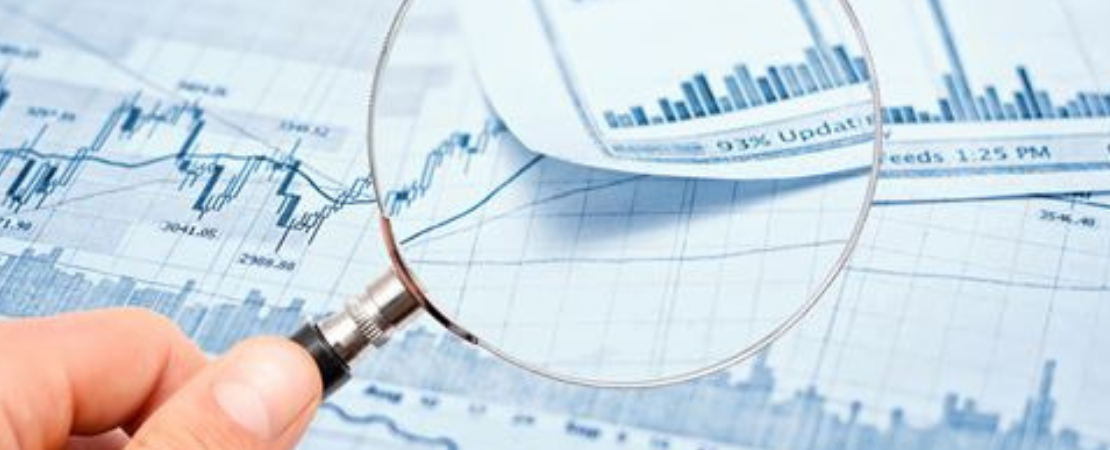Skip 2022 Investment Predictions, Check Out 5 Investment Themes Instead
The start of a new year welcomes two time-tested annual rituals: New Year’s resolutions and investment predictions. Even though most people abandon their resolutions after about a month, they often put long-term faith in investment predictions. Wall Street certainly enjoys the attention they get from clients who yearn for insight into what an uncertain future holds.
I’ve recently started a new tradition each January of reading investment predictions from the previous year and comparing them to what actually happened. It’s a really enjoyable exercise for two reasons: first, despite coming from brilliant teams with abundant resources, it’s amazing to see how often these predictions are stunningly wrong. (To be fair, predicting the future is an impossible task!). And second, the wildly inaccurate predictions give my brain freedom to not seek out uncertain futures. After all, how many 2021 predictions pegged inflation at 7% for the year? Most predicted 2-3%, including the Fed. And how many predicted the S&P 500 would have a 27% return for 2021? I couldn’t find one that was even within 10% of the actual outcome.
Instead of predictions that would most certainly be wrong anyway, I thought it would be more worthwhile to share five themes for 2022 that investors should watch.
Market Returns
The S&P 500 returned 27% in 2021, roughly triple its long-term average, marking the 3rd consecutive year of strong double-digit returns by the U.S. benchmark index. Its three-year average annual return since 2019 is 24%, which is the S&P’s best three-year period since the late 1990s.1
Heading into 2022, investors would be well-served to temper their expectations around returns. With the three-year rally, market valuations are above their long-term averages. At the same time, optimism remains for the new year. The consumer makes up roughly 2/3 of the U.S. economy. With low unemployment, rising wages, lower debt levels, and higher savings rates, U.S. consumers are looking healthy and wealthy. Combine that with corporate earnings expected to grow 9% in 2022 and there’s good reason to believe that the current economic expansion can produce a 4th consecutive positive year for the S&P 500 – just don’t bet on 20+% returns in 2022.2
Inflation
After lying dormant for more than a decade, inflation was the hot topic of 2021. During the 2010s, inflation, as measured by CPI, averaged 1.8% per year.3 In 2021, inflation soared to 7%. There were a handful of factors that drove inflation higher, including soaring consumer demand, supply chain issues stemming from the pandemic, fiscal and monetary policy, rising real estate prices, and rising wages.
As investors look to 2022, inflation will likely retreat from its 2021 levels as supply chain challenges are resolved, business inventories are restocked, and consumer demand likely softens without the benefit of government stimulus checks. But rising home prices and wages are two of the stickier components of inflation, so it’s unlikely that inflation will return to its pre-pandemic levels in the near future. Investors should remember that moderate inflation is a sign of a growing, healthy economy and positive for stocks. And most importantly, over time, the best hedge against inflation is a diversified portfolio of stocks.
The Wall of Worry
It happens every year like clockwork: investors look at impending risks to the market and feel a sense of doom and gloom. In 2019, the market stared straight up at U.S./China relations, tariff and trade battles, and Brexit. In 2020, the covid pandemic and U.S. presidential elections created severe investor indigestion. Last year, high market valuations, the pandemic, and the threat of inflation churned investors’ stomachs. Despite those large walls, the S&P averaged a return of 24% over the three-year period and 2020’s worst year performance still generated an 18% return.
Each and every year the stock market faces a wall of worry it must climb. And yet, historically annual market returns have been positive 75% of the time. As we begin 2022, the market doesn’t suffer from a lack of worries: inflation, Omicron variant, the Fed’s speed of removing accommodative policy, mid-term elections, and geopolitical risks. For investors, it’s critical that they understand that this wall of worry is the norm, not the exception when investing.
Volatility
The up and down fluctuation of stocks is supposed to be the price investors pay for the opportunity to earn returns above that of a savings account at the bank. But in 2021, investors managed to have their cake and eat it too. Historically on average, the market has three pullbacks of 5% and one correction of 10% each year. In 2021, the market experienced only one pullback and didn’t have a correction. In fact, the market hasn’t experienced a 10% correction since the bear market in March 2020 at the pandemic’s onset.
Given the aforementioned wall of worries that investors face in 2022 and with volatility running well below normal levels in 2021, investors should prepare for more market volatility in 2022 by making sure they own the right balance of stocks and bonds for their risk tolerance.
The Pandemic
This time last year, many predicted that it was the beginning of the end for the Covid Pandemic with the arrival and broad distribution of vaccinations. Stocks rallied and interest rates climbed in the first quarter of 2021 on the expectation that the economic recovery would get even stronger. And then covid variants struck, putting pressure on financial markets and introducing us to vaccine booster shots.
As the world currently battles the Omicron variant, investors should be mindful that we remain entrenched in the worst pandemic in a century. The last time the U.S. economy dealt with a pandemic of this proportion, TVs, and refrigerators didn’t exist, the Model T was the car to own, and total U.S. GDP rivaled the GDP of Alaska in 2021. No one can predict how long this variant or any other unknown variants will linger and what effect it will have on global economies in 2022. Making accurate investment predictions is impossible in normal years let alone in the midst of a century-worst pandemic.
I expect these five themes to drive financial news headlines in 2022, drawing investors like a moth to a flame. But for investors desiring to achieve their long-term financial goals, it’s critical that they have a short-term memory like that of Wall Street experts making investment predictions. Speaking of predictions, I’ll give in to the seasonal temptation and leave you with just one: investors will be much more successful in staying on course with their financial goals by letting the headlines of their lives dictate any changes to their financial plan, not the headlines in the news. Here’s to a happy and healthy 2022!

by JOHN FISCHER, CFA®, CFP®
John is the Chief Investment Officer (CIO) at Mosaic Family Wealth. He leads the firm’s Investment Committee which shapes the firm’s investment philosophy and strategy for client portfolios. He also serves on Mosaic’s Leadership Team. A 20-year industry veteran, John is most passionate about helping people understand how emotions relating to investments can be more important than the investments themselves in achieving financial goals.
_______________________________________
Please note that nothing in this content should be construed as an offer to sell or the solicitation of an offer to purchase an interest in any security or separate account. Nothing in this content is intended to be, and you should not consider anything in this content to be, investment, accounting, tax, or legal advice. If you would like investment, accounting, tax, or legal advice, you should consult with your own accountants or attorneys regarding your individual circumstances and needs.
Mosaic Family Wealth, LLC is a Registered Investment Adviser. Advisory services are only offered to clients or prospective clients where Mosaic Family Wealth, LLC and its representatives are properly licensed or exempt from licensure.

